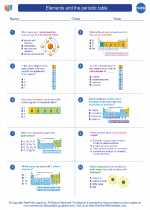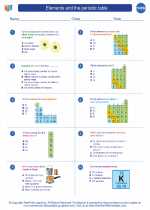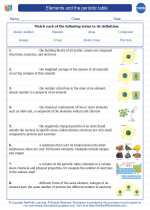Molar Mass: Explanation and Study Guide
Molar mass is a fundamental concept in chemistry that refers to the mass of one mole of a substance. It is expressed in grams per mole (g/mol) and is an important property when working with chemical reactions and stoichiometry.
Calculating Molar Mass
The molar mass of a compound is calculated by adding up the atomic masses of all the atoms in the compound. The atomic mass of an element is found on the periodic table and is given in atomic mass units (amu).
For example, to calculate the molar mass of water (H2O), you would add the atomic masses of two hydrogen atoms and one oxygen atom:
Molar mass of H2O = (2 × atomic mass of hydrogen) + (1 × atomic mass of oxygen)
Units of Molar Mass
Molar mass is expressed in grams per mole (g/mol). This means that one mole of any substance has a mass in grams equal to its molar mass. For example, the molar mass of carbon (C) is approximately 12.01 g/mol, which means that one mole of carbon atoms has a mass of 12.01 grams.
Importance of Molar Mass
Molar mass is essential for various calculations in chemistry, such as determining the amount of a substance needed for a reaction, converting between mass and moles, and understanding the composition of compounds. It is also used to find the empirical and molecular formulas of compounds.
Practice Problems
To reinforce your understanding of molar mass, try solving the following practice problems:
- Calculate the molar mass of sulfuric acid (H2SO4).
- Determine the molar mass of calcium carbonate (CaCO3).
- If the molar mass of a compound is 180.16 g/mol, how many moles are present in 360.32 grams of the compound?
By practicing these problems, you can enhance your skills in calculating molar mass and using it in various chemistry applications.
Summary
Molar mass is a crucial concept in chemistry, representing the mass of one mole of a substance. It is calculated by adding up the atomic masses of the atoms in a compound and is expressed in grams per mole. Understanding molar mass is essential for performing chemical calculations and comprehending the composition of substances.
By mastering the concept of molar mass, you can strengthen your foundation in chemistry and tackle a wide range of problems related to chemical quantities and reactions.
Now that you have learned about molar mass, take your knowledge to the next level by exploring its applications in stoichiometry, empirical formulas, and more!
[Molar Mass] Related Worksheets and Study Guides:
.◂Chemistry Worksheets and Study Guides High School. Elements and the periodic table

 Worksheet/Answer key
Worksheet/Answer key
 Worksheet/Answer key
Worksheet/Answer key
 Vocabulary/Answer key
Vocabulary/Answer key
 Vocabulary/Answer key
Vocabulary/Answer key
 Vocabulary/Answer key
Vocabulary/Answer key
